Concerns about the world’s rapidly growing population led to far-reaching calls for control measures in the 1960s. In India, such worries that overpopulation would increase poverty and restrict economic growth drove the country to focus on population control as a strategy for development.
The government embarked on a strict sterilization campaign, relying heavily on targets and monetary incentives to reduce birth rates. Protests helped lead to the end of that program, and sterilization targets were later officially abandoned.
Today, the country’s fertility rate has declined to an estimated 2.4 children per woman, from about 5.9 in the 1950s. But fertility rates vary significantly throughout the country, and with 1.3 billion people, India is predicted to become the most populous nation in the world before 2030.
Concern about population persists, particularly in northern regions where women on average still have more children. Fertility rates remain high in Bihar, a state in the north that has lagged in development. Literacy rates are lower there and women have less access to regular health services, including birth control, and in rural regions particularly.
Sterilization is sometimes the only available form of family planning. Fertility is much lower in Tamil Nadu, a more developed state in the south that has a history of investing in education and health care. The experiences of families there show how improvements in health and social conditions directly affect family planning decisions, by helping women decide to have smaller families on their own.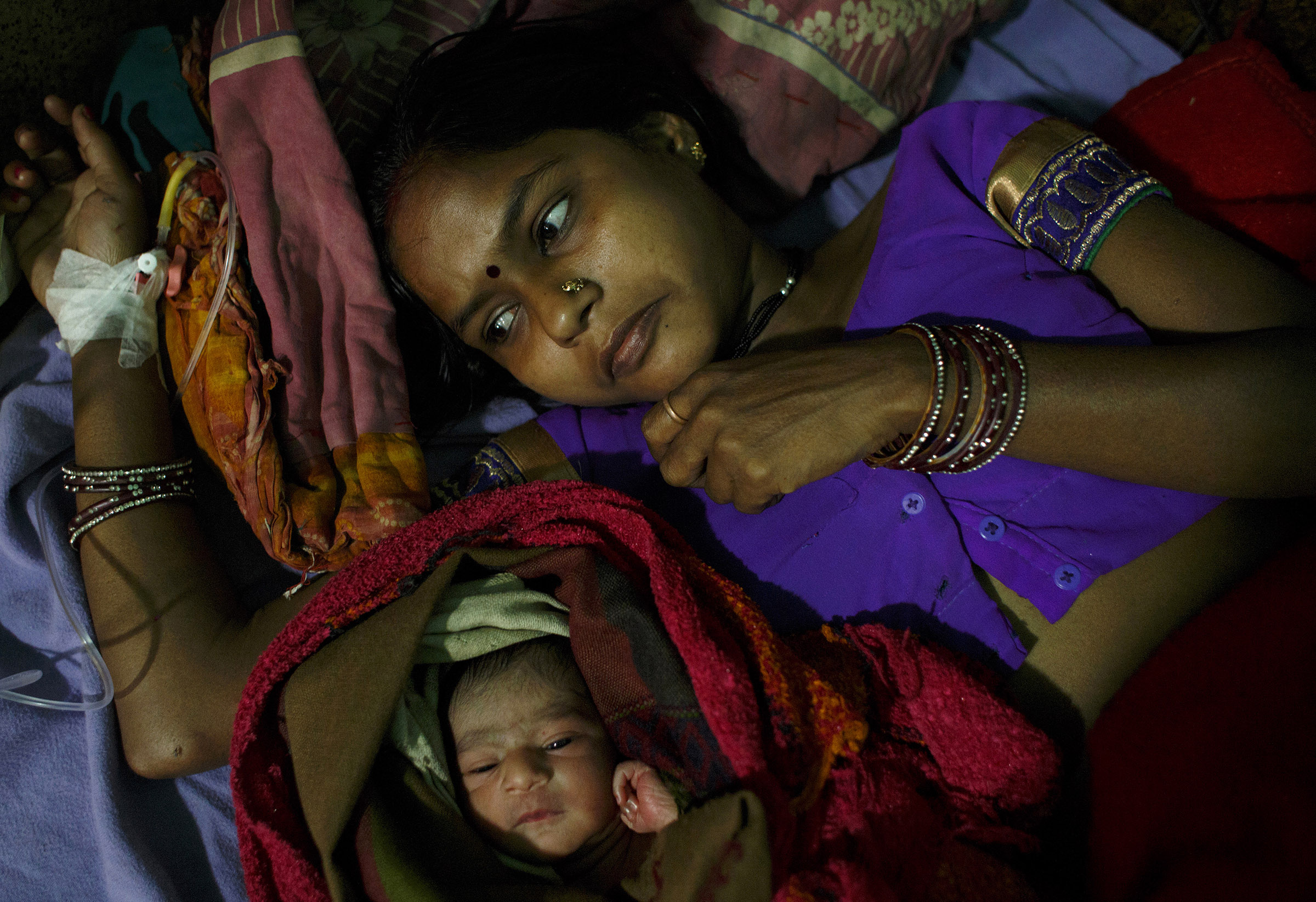
Munni Devi, 25, rests with her newborn, Sachin, at the Darbhanga Medical College Hospital in the northern state of Bihar. Devi has two children. India’s fertility rate has declined from about 5.9 children per woman in the 1950s to about 2.4 today. But fertility remains higher in northern India, and Bihar has one of the highest rates in the country.
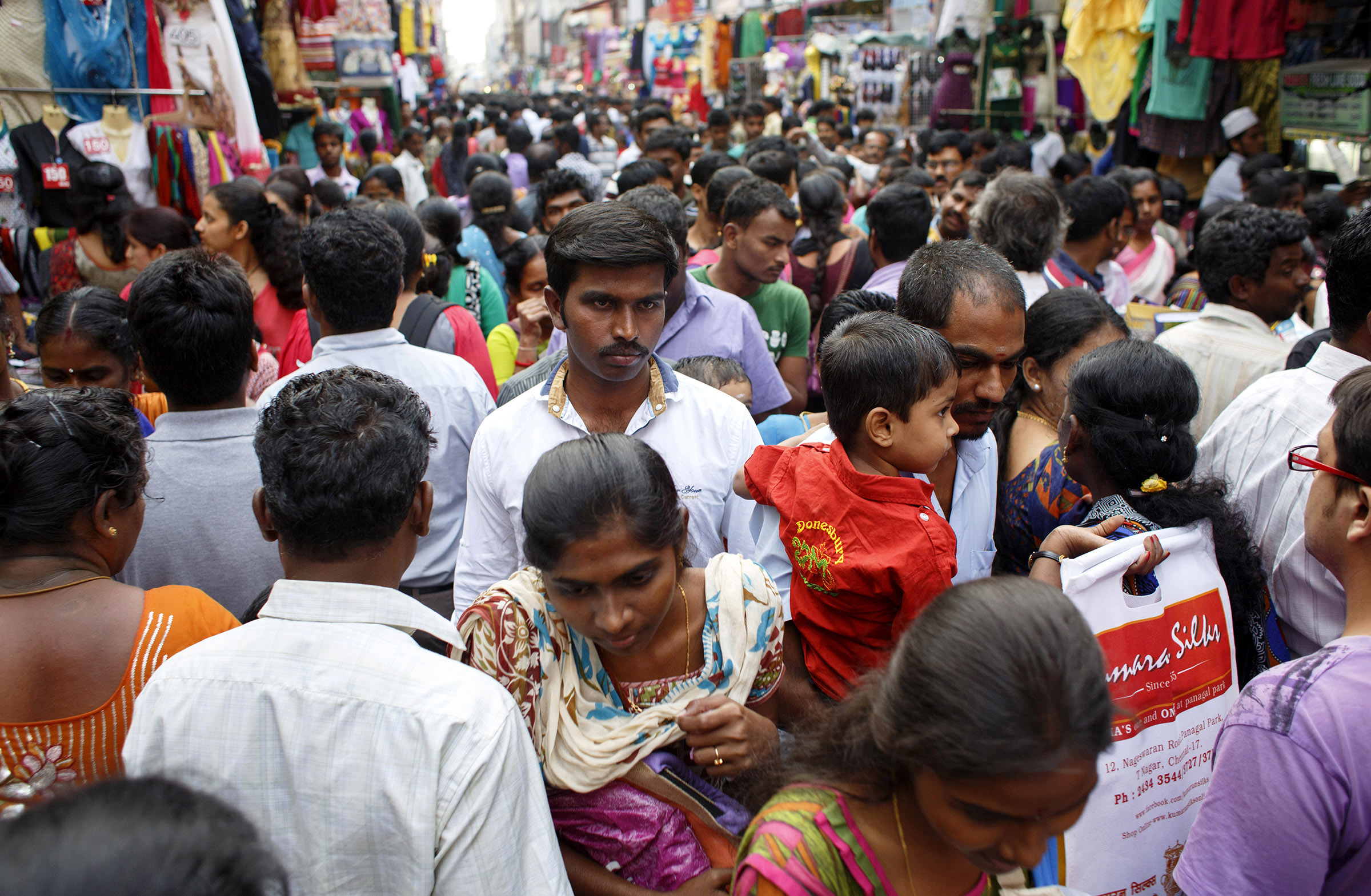
Crowds make their way through the Theagaraya Nagar Market in Chennai, India, in December 2014. India is the second most populous country in the world; rapid population growth has been a concern of the government for decades.
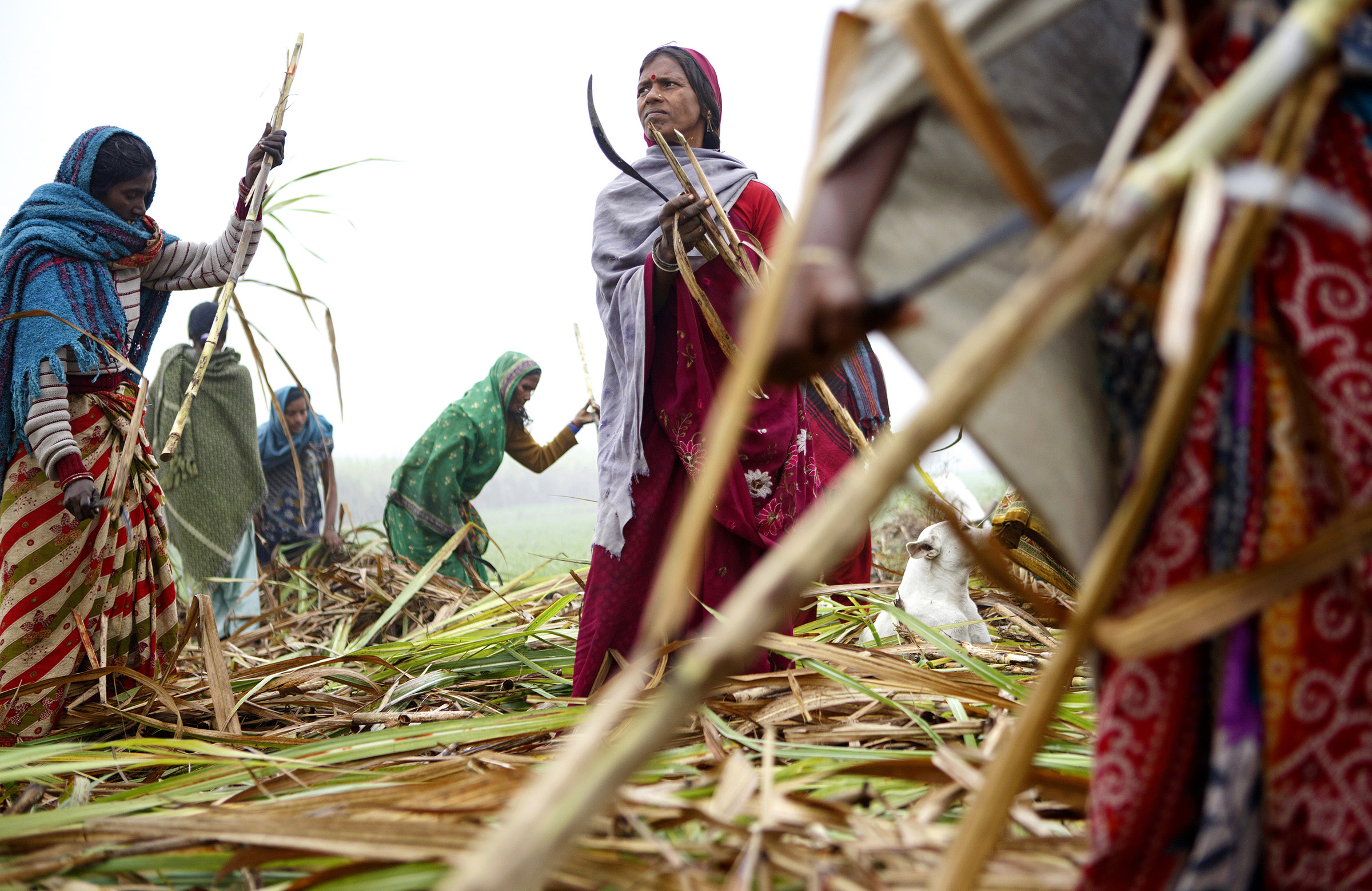
Phul Kumari Devi, center, cuts sugar cane with other women from Pahsara Village. Much of Bihar is rural, and fertility is often higher in rural regions. Dr. Shakeel ur Rahman, who runs an NGO in Patna, says that in impoverished areas, children are seen as a form of social security. And across India, sons are still preferred: “They want a male child, and unless there is a male child, the girl children will be produced again and again and again,” he says.

Manshi Kumari, 4, at her family’s home in the city of Patna, Bihar. India’s family planning program has long centered on sterilization, and health advocates say that the country – which has the largest youth population in the world – needs to invest more in non-permanent forms of birth control.
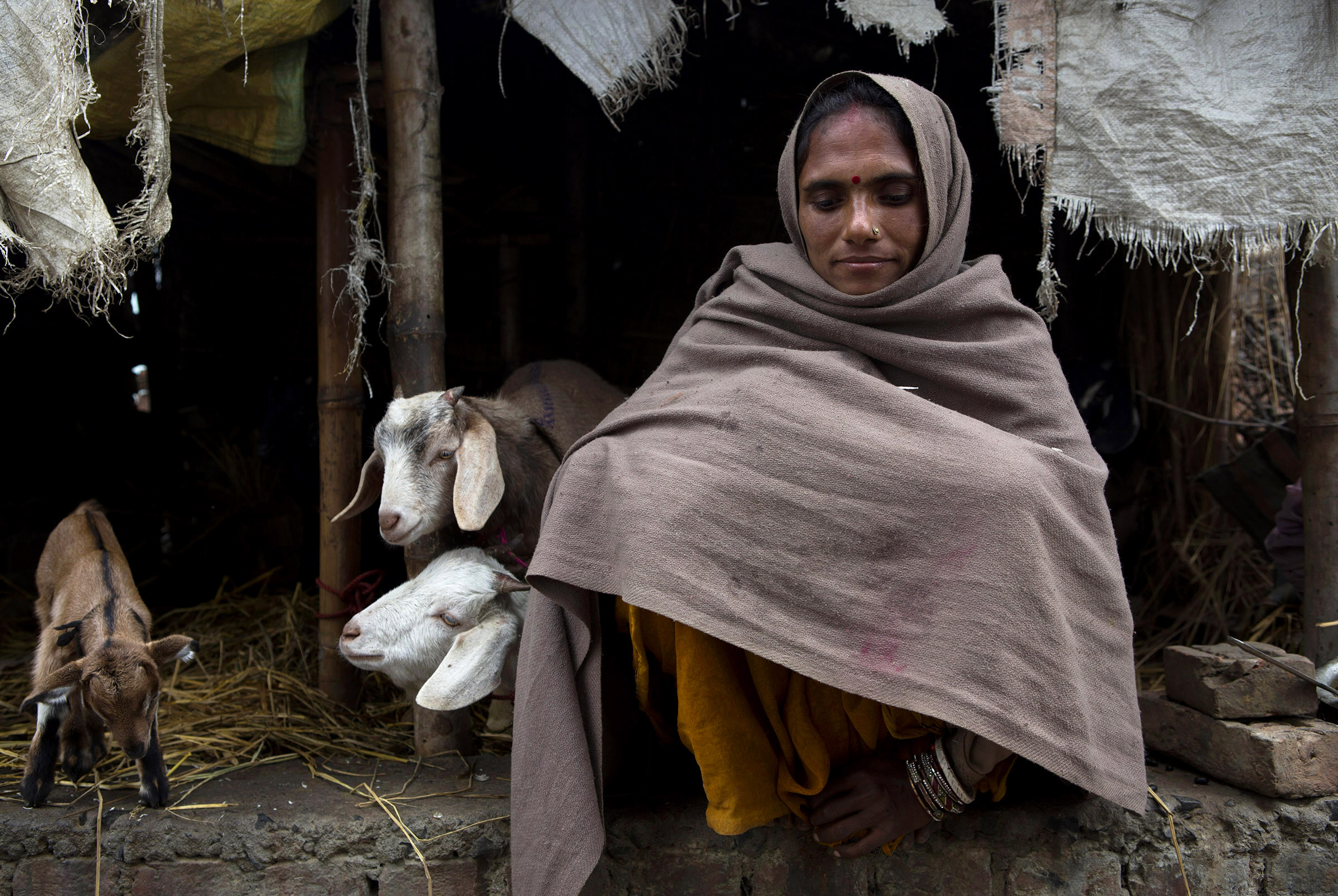
Ramjhari Devi, at her home in a village in the Darbhanga District of Bihar, has eight children.

Students learn at the Gangraho village school in rural Bihar, where literacy rates are lower than in any other state in India, according to 2011 Indian Census data. Experts connect the lack of schooling – especially among girls – to high fertility.
“Look at what education does to people’s lives,” says Subha Sri, a doctor in the southern state of Tamil Nadu. “When you’re literate,” she says, “you are automatically exposed to a lot more information … That plays a role in actually deciding how many children you want, at what age you want them.”

Women in the maternity ward of Darbhanga Medical College Hospital in Bihar. In recent years, the government has started offering monetary incentives to encourage women to give birth in hospitals. Widespread immunization programs have also made children healthier. Dr. M. P. Choudhary, who works in Bihar, says that such efforts can influence family size. When maternal and infant health improves, and parents feel their children have a better likelihood of survival, they typically don’t have as many children.
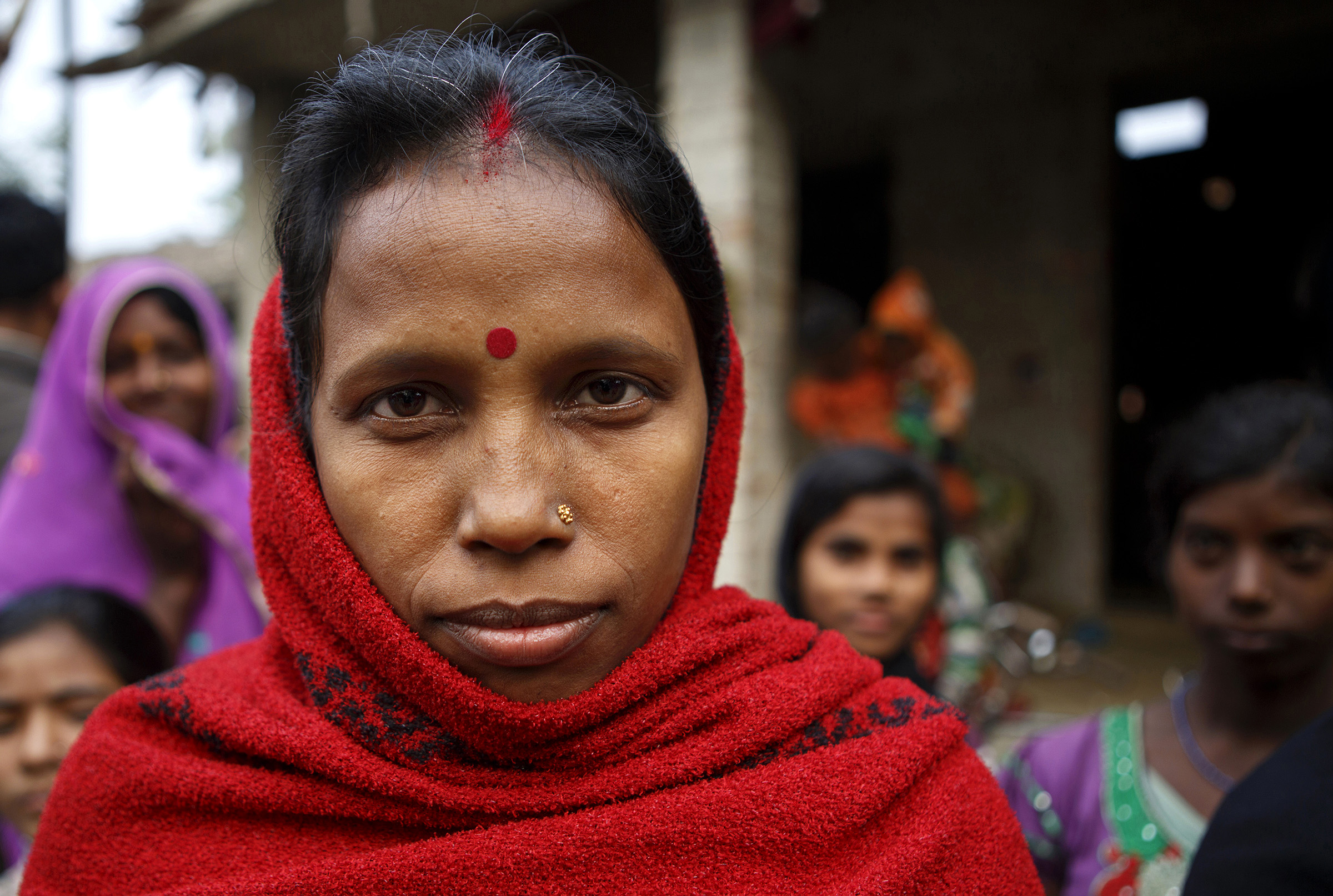
Lakshmi Thakur, 36, is an asha – an accredited social health activist – in the Begusarai District of Bihar, India. Ashas help women navigate the public health system, particularly in rural areas. Some argue that, as part of state incentive systems — which pay patients, doctors and health care workers for every sterilization — ashas may be influenced to push sterilization. In certain regions, it’s still the only birth control option made available, despite the fact that the Indian government has promised to expand access to other methods of contraception.
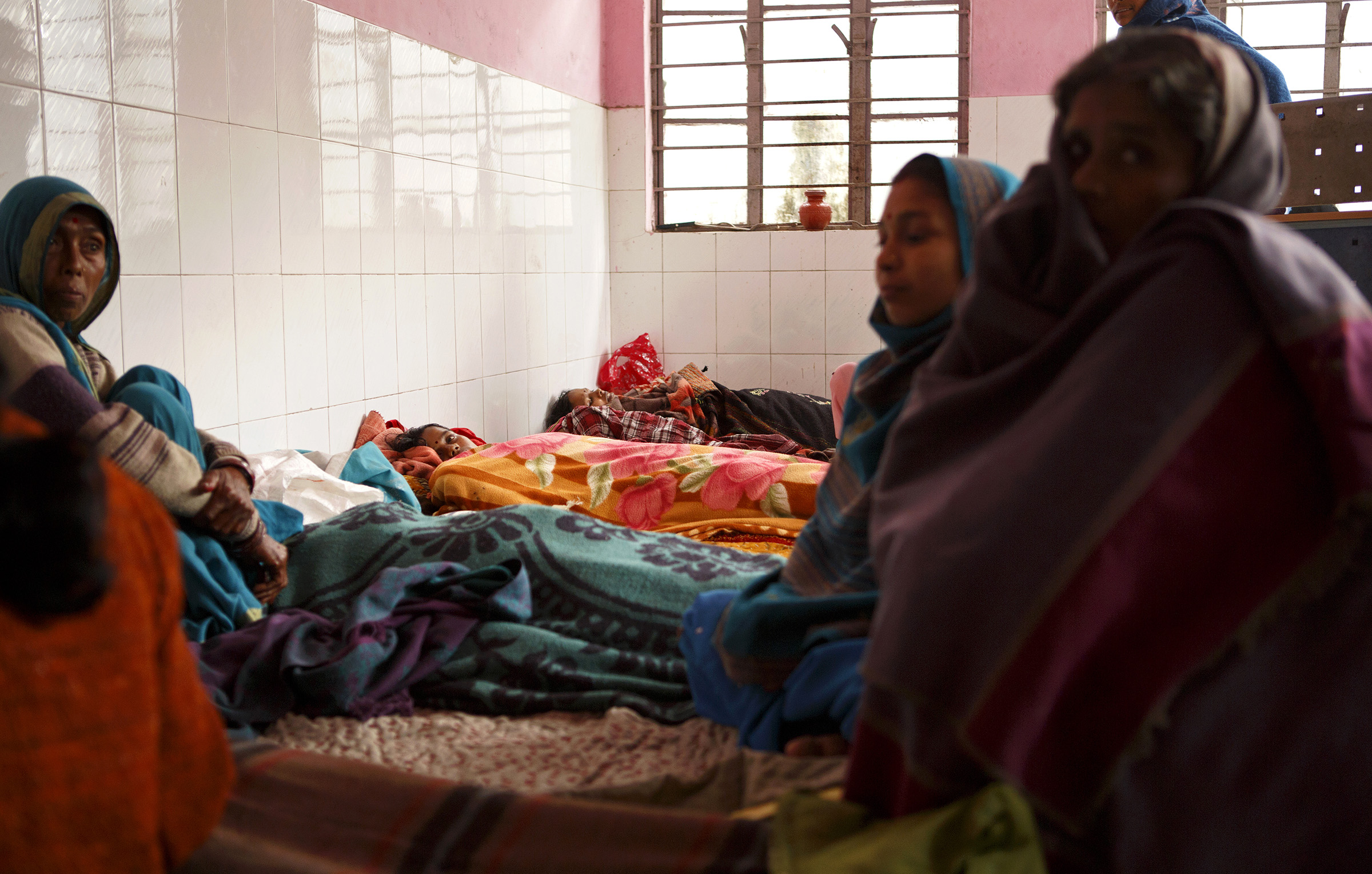
Surrounded by family members, women rest after having sterilization operations that day at the Cheria Bariarpur Primary Health Centre in the Begusarai District of Bihar in December. Sterilization is by far the most commonly used method of birth control in India. According to the most recent National Family Health Survey in 2005 – 2006, 77 percent of sterilized women in India had never used any other method of birth control before sterilization.
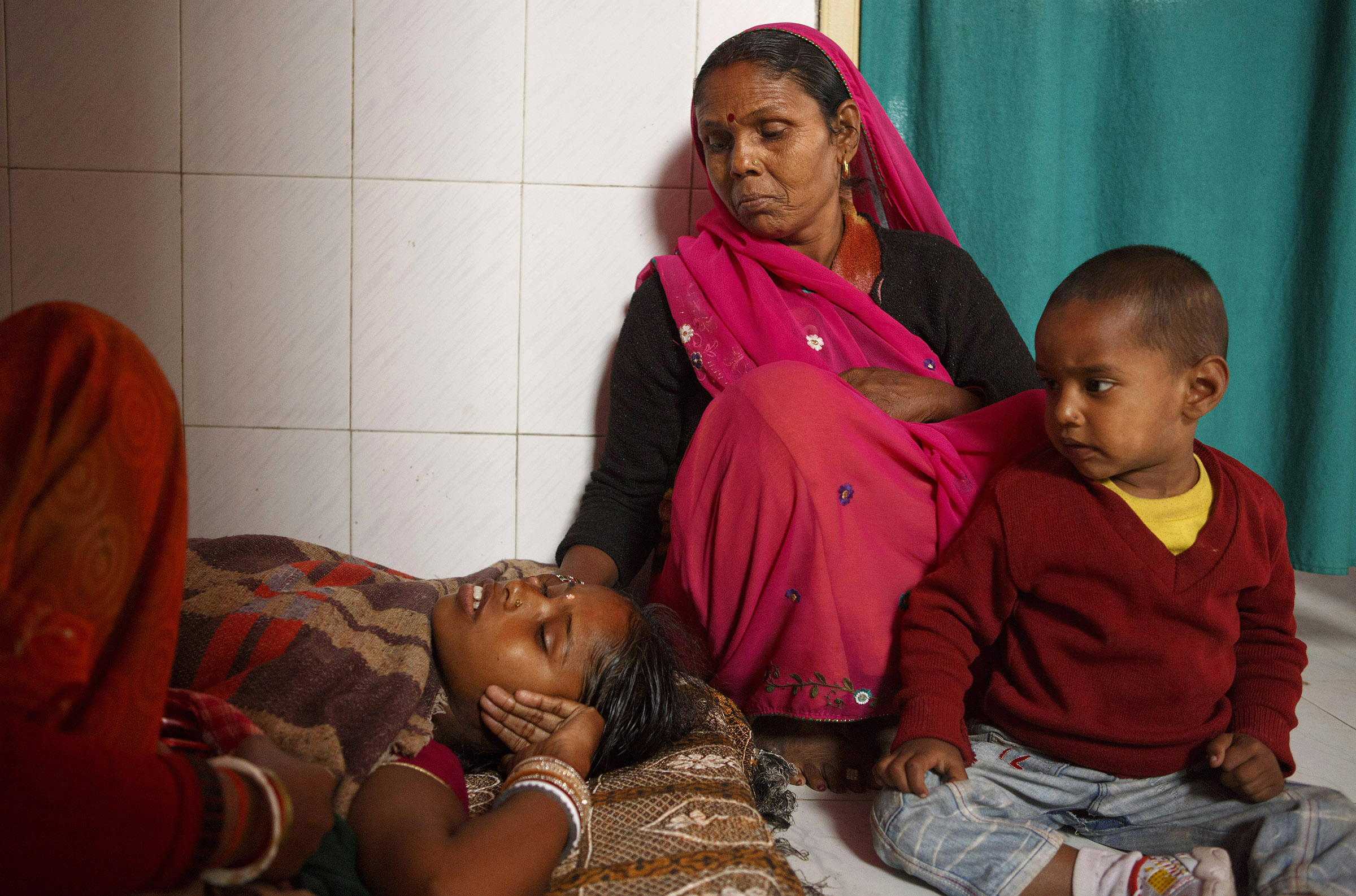
Nuta Devi, center, looks over her daughter, Manju, left, who is resting after her sterilization surgery at the Cheria Bariarpur Primary Health Centre in the Begusarai District of Bihar. A sterilization clinic was held that day for women wishing to be sterilized. Many health care workers point out that sterilization is a one-time procedure that requires little follow-up care. For rural women without regular access to health services and with less autonomy in their decision making, it’s often the best tool they have to control their own fertility.
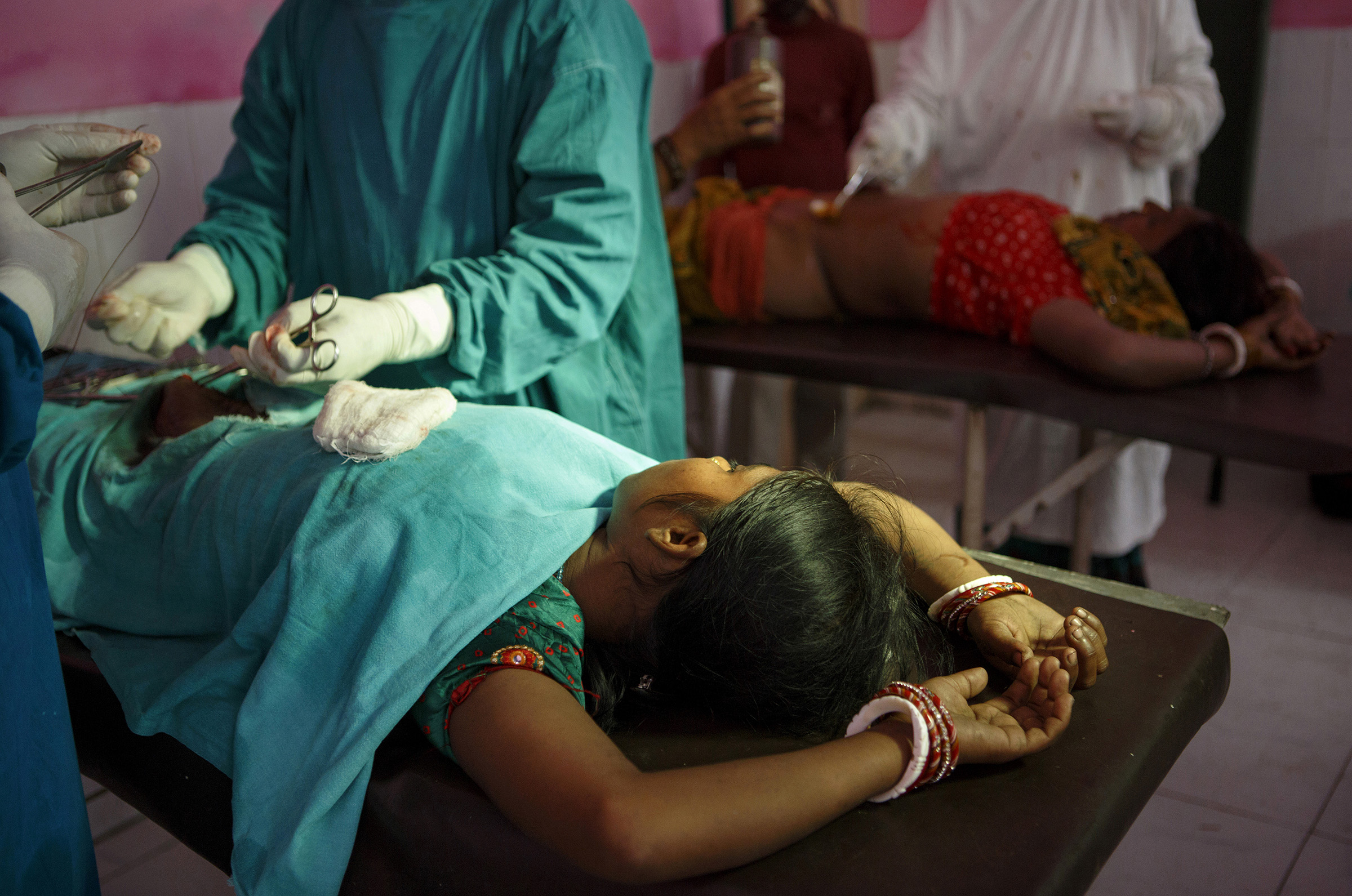
Women undergo sterilization operations at the Cheria Bariarpur Primary Health Centre in the Begusarai District of Bihar. A few dozen women were sterilized in one day. Although India officially abandoned sterilization targets years ago, unofficial targets remain in place, according to people working on the ground. One Primary Health Centre doctor says the targets in themselves are not necessarily the problem, arguing instead that it’s the lack of a good healthcare infrastructure in some places that makes it difficult to safely meet those targets.

Neha Sinha, a health counselor at the Janani Surya Clinic in Patna, Bihar, advises a family on birth control options. The bulk of India’s unmet family planning needs are in the northern states – Bihar and Uttar Pradesh in particular – says Director Don Douglas. “We see women coming in all the time, age 23, 24, with 3 and 4 children already, and saying enough – I’ve had enough babies,” he says.
Douglas says that a lack of education, especially for girls, helps to explain Bihar’s high fertility. Girls are being taken out of school early and married at a young age; over half of all women in Bihar are married before age 18.
“If you want to move the needle on population control, this is the epicenter,” he says.
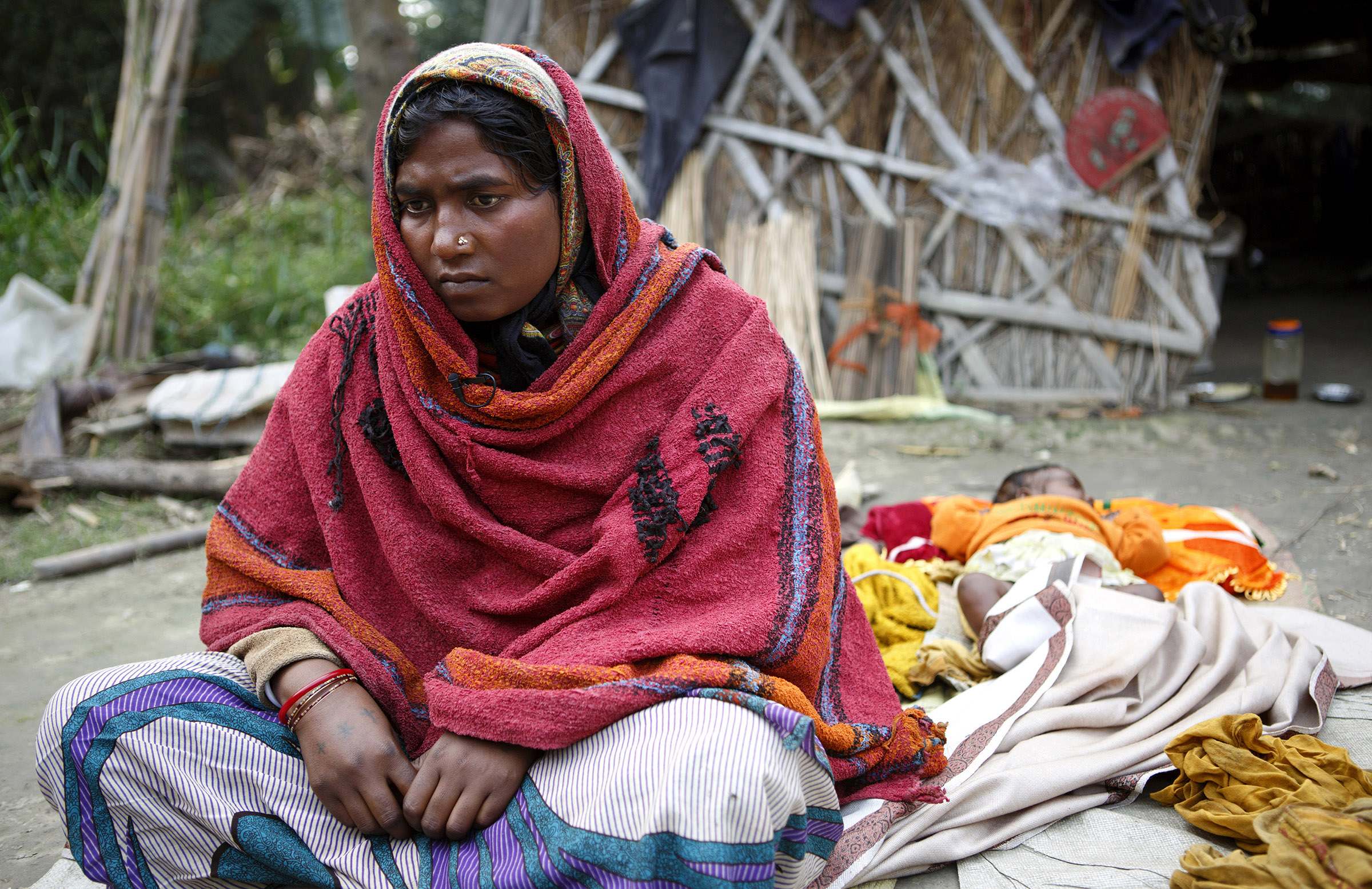
A few days after her sterilization operation, Sonia Devi, 35, recuperates at home with her fourth daughter, a newborn named Lovely, in the Begusarai District in Bihar. After she gave birth, Sonia says an asha told her about the option of using sterilization to limit her family size. Sonia didn’t appear to be aware of other methods of birth control.
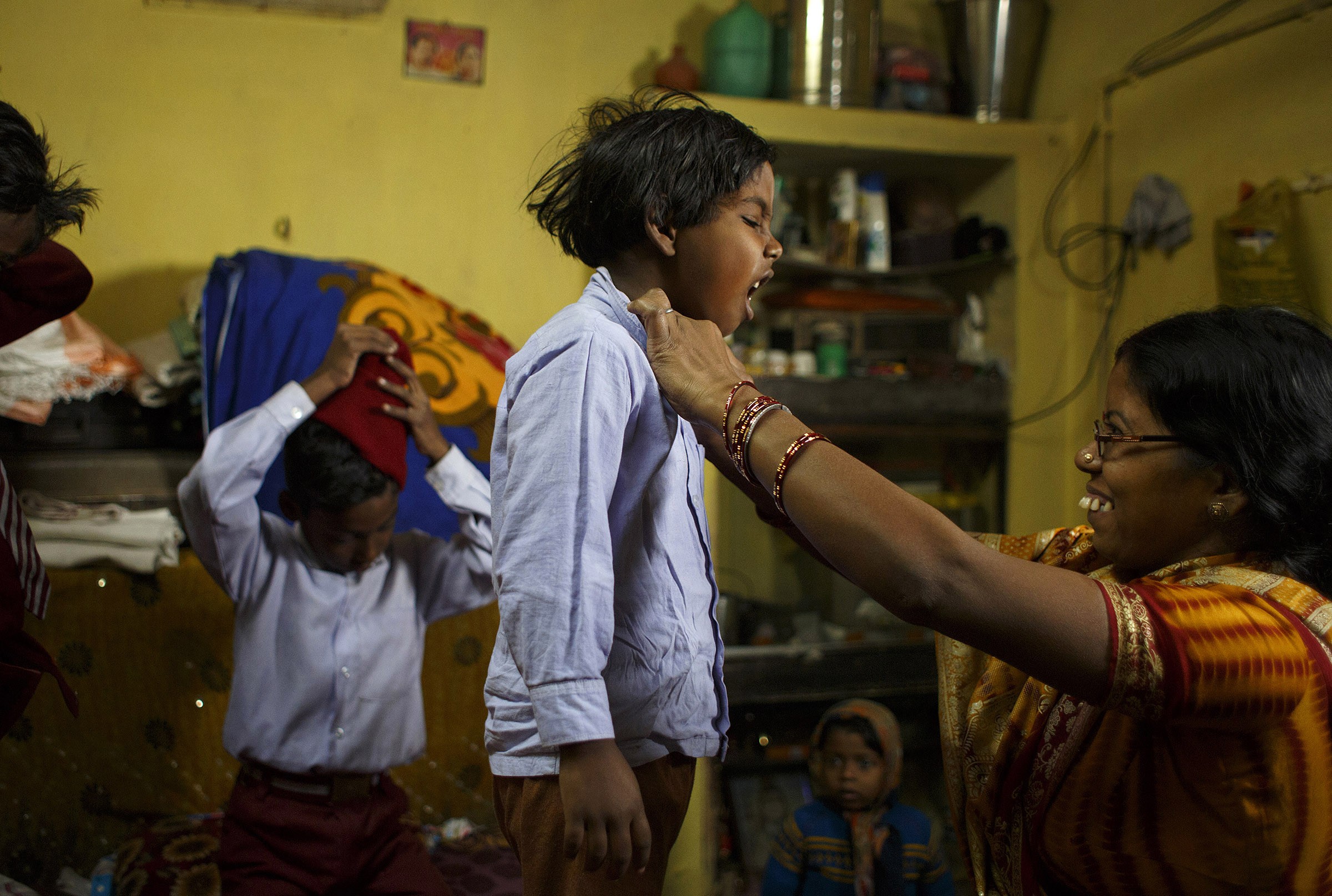
Seema Devi, 33, helps her daughter, Semeran Kumari, 6, remove her school uniform after class at their home in Patna, Bihar. Though she came from a large family, she decided her third child would be her last. After using a Copper-T IUD for years, she chose to get sterilized. She says it would be difficult for her and her husband to support another child, and to provide their three children with the kind of education they want for them.

A woman walks through a neighborhood in Chennai, Tamil Nadu. The state has much lower fertility rates than elsewhere in India. There has been an effective family planning program for years here, but experts say that big improvements in the health and education system have been just as important. Maternal and infant health have greatly improved, literacy rates are higher and infrastructure developments like roads and electricity are more widespread.

Sanmugam Loganathan looks at his teacher, S. Kanmani, as she reviews his notebook at the Panchayat Union Middle School in the Kancheepuram District of Tamil Nadu, a state in southern India. Literacy rates are much higher in Tamil Nadu and across southern India in general. The state government has used various schemes to improve literacy, including offering free textbooks, uniforms, bus passes and bicycles. The Midday Meal Scheme – a nationwide program that provides free lunches to schoolchildren – was first introduced in Tamil Nadu, and has been particularly effective in improving attendance and childhood nutrition.
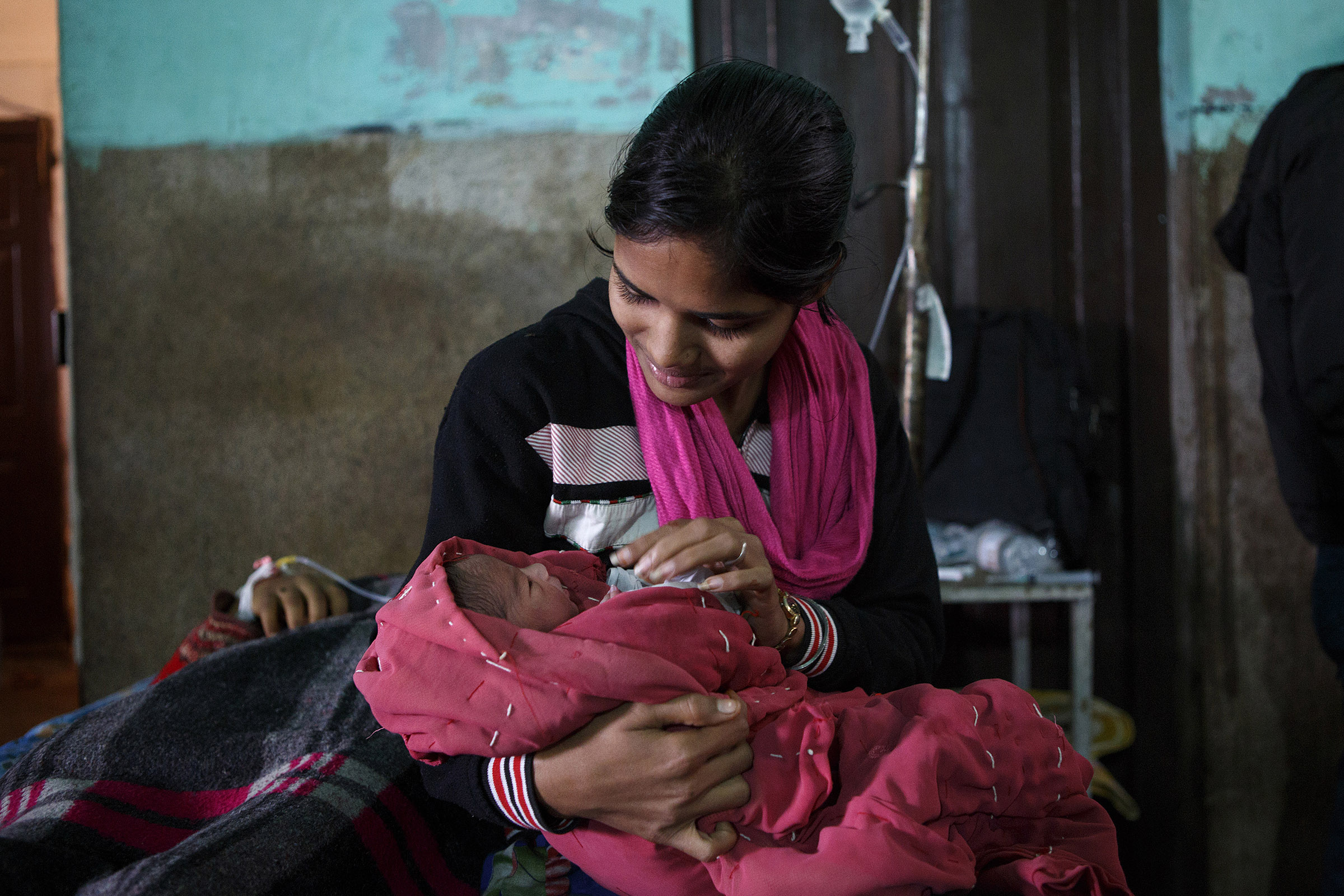
Gurrai Kumari, 18, holds her newborn niece, as the baby’s mother, Nisha, 21, rests after delivery at the Darbhanga Medical College Hospital in Bihar.

In recent years in Bihar, maternal care has improved, too. Here, Rashmi Devi, 31, pregnant with her third child, is examined by Dr. Gunjan Trivedi at the I. B. Smriti Arogya Sadan Hospital in the city of Darbhanga, Bihar.
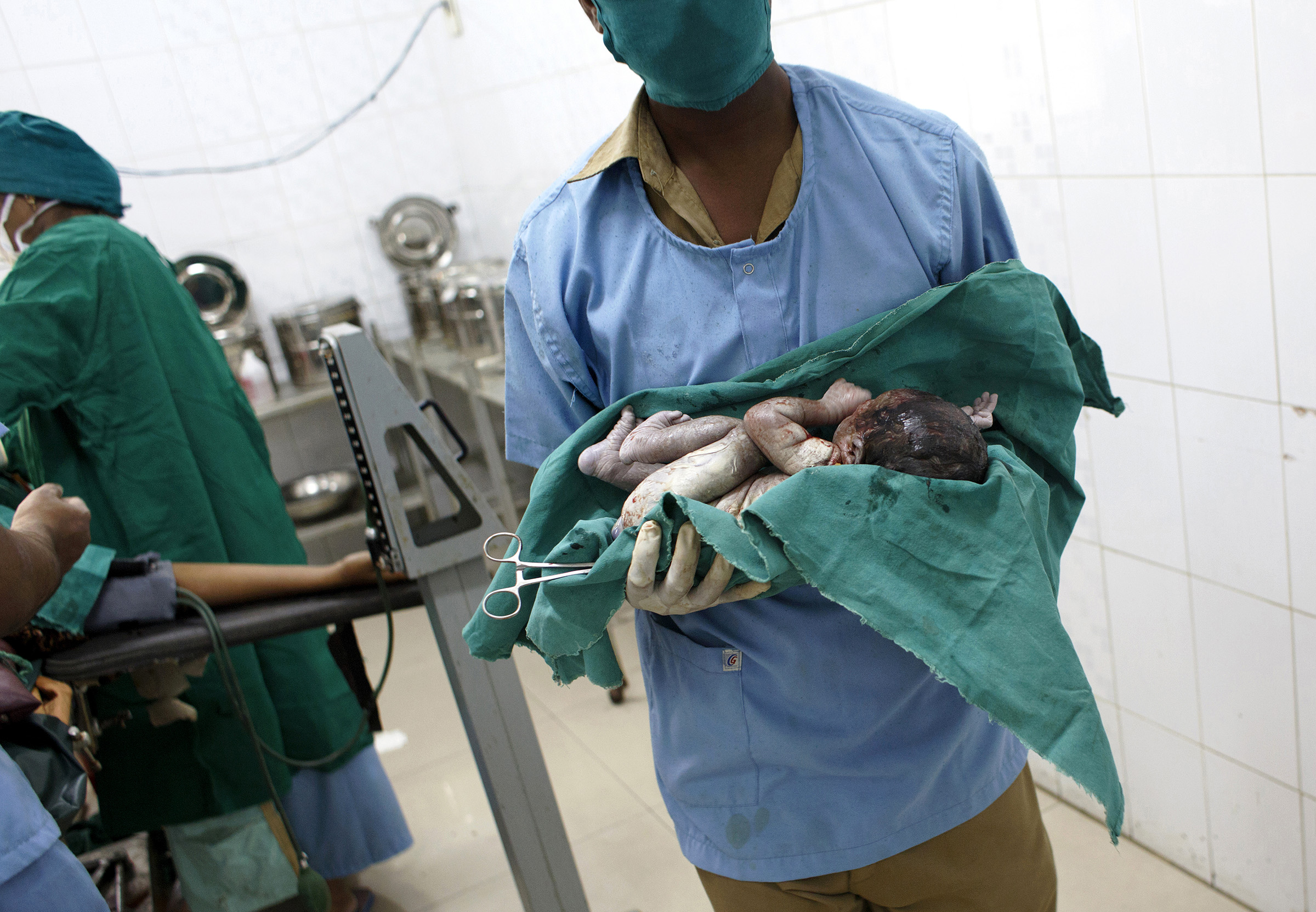
Seconds after delivery, a newborn is carried to the neonatal area in the Medavakkam Primary Health Centre in Tamil Nadu. The Centre delivers 150 to 200 babies a month, and Dr. Ravichandran, the director, estimates that over 90 percent of women from the surrounding area now give birth at the hospital rather than at home. In Tamil Nadu, maternal and family health care have been part of the government’s longstanding investment in public health.

Newborns lay at the Medavakkam Primary Health Centre in Tamil Nadu. The state has had a robust history of social welfare programs. A recent one targeting maternal health has increased the amount of money provided to women below the poverty line, says Dr. Ravichandran. Payments are made in three installments: during pregnancy after the mother has completed an array of tests and a sonogram, following birth in a government facility, and after the baby has begun receiving immunizations several months later.
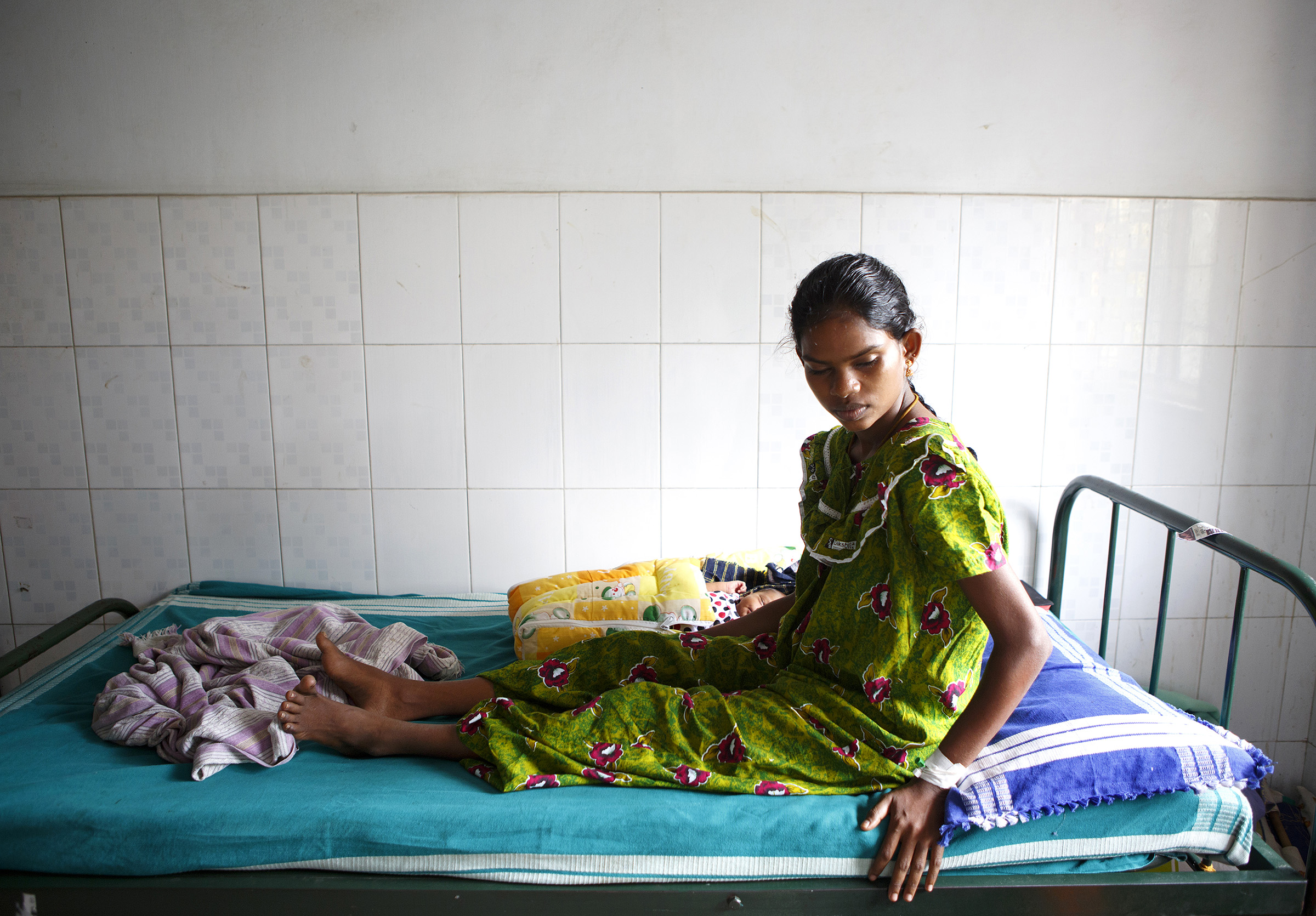
A mother, with her infant beside her, at the Medavakkam Primary Health Centre in Tamil Nadu in December, 2014.

B. Rajeshwari, 23, cares for her first child, a 5-day-old daughter not yet named, at the Medavakkam Primary Health Centre in Tamil Nadu. A family friend, Radish, far left, looks on.
Photographer’s Note
My photographs were part of a documentary and multimedia project for Retro Report, funded with help from The Pulitzer Center on Crisis Reporting. The project set out to examine “the population bomb,” the controversial argument made in the 1960s that the earth could not sustain the world’s exploding population growth, and that control measures would be needed.
As I thought about how best to photograph this story, I was interested in the legacy of India’s approach to population control. How does it affect the way women use birth control today, and the options that are made available to them? What other factors influence how women make decisions about the size of their families?
In rural Bihar, I photographed inside a clinic where women were undergoing sterilization operations. Two doctors moved from one woman to the next performing the procedures. Other women lay recuperating in the two adjacent rooms and hallways, wrapped in blankets and surrounded by their female relatives. In a neighboring farming village, I met Sonia Devi, a mother of four, who had just undergone a sterilization operation. She told me that it was the only method of birth control offered to her, and appeared unaware that other options existed.
In Tamil Nadu in the south, I looked at how access to roads, electricity and even televisions can influence decisions on family size. I visited a school where classrooms were outfitted with textbooks and TVs. I photographed in the delivery room of a clinic where a longstanding focus on infant and maternal care has made mothers and children healthier. A father living in the city of Chennai told me that most people he knows don’t have more than two children anymore.
Dr. Subha Sri, an obstetrician from the region, emphasized to me that what makes Tamil Nadu different is that the family planning program has “gone hand in hand with other programs … especially education and health.” And so when looking at the issue of overpopulation, she added, you need to think beyond the availability of family planning services. “People have to make a choice to actually use those services, and people will make that choice if they see how it’s actually going to change their lives.”

































